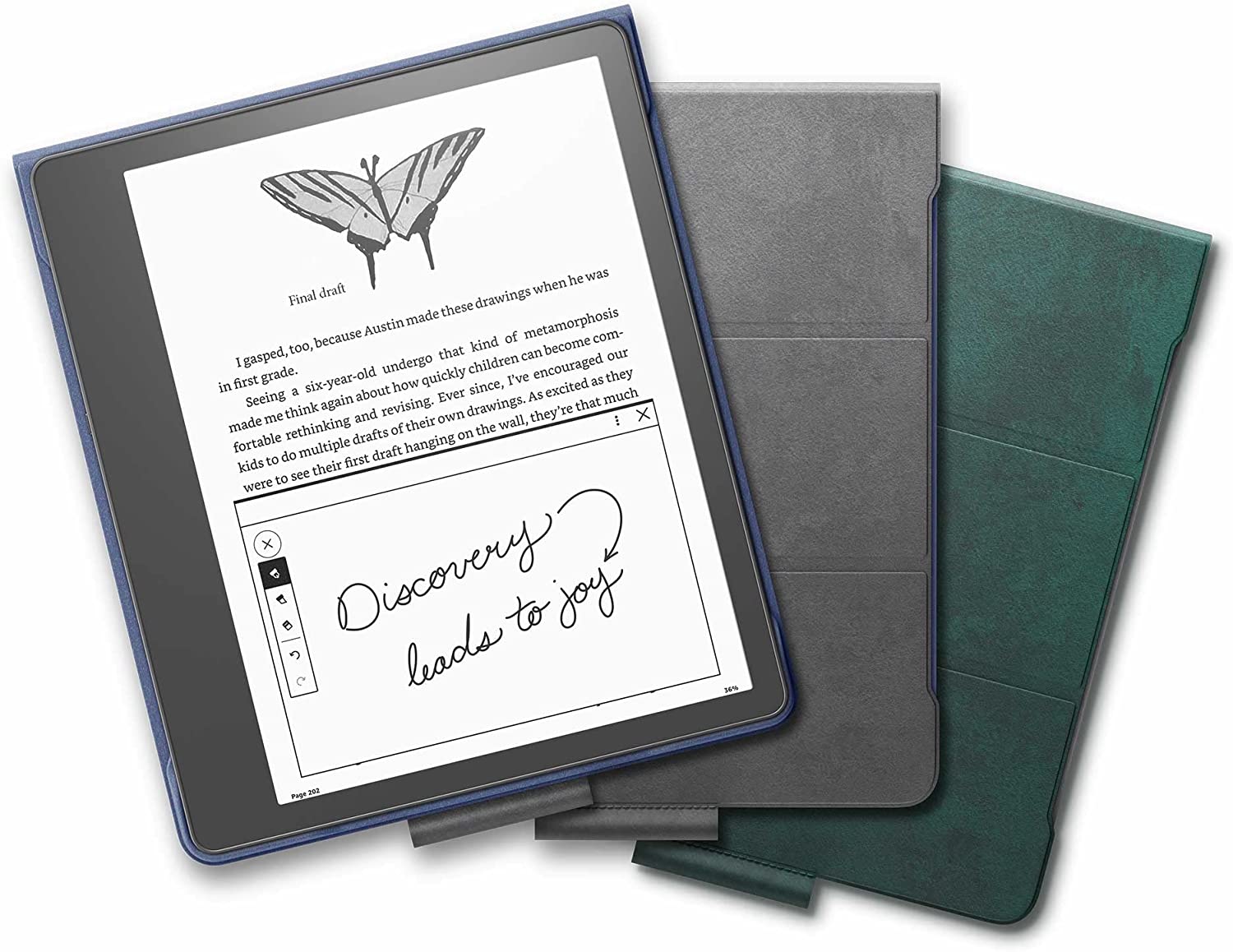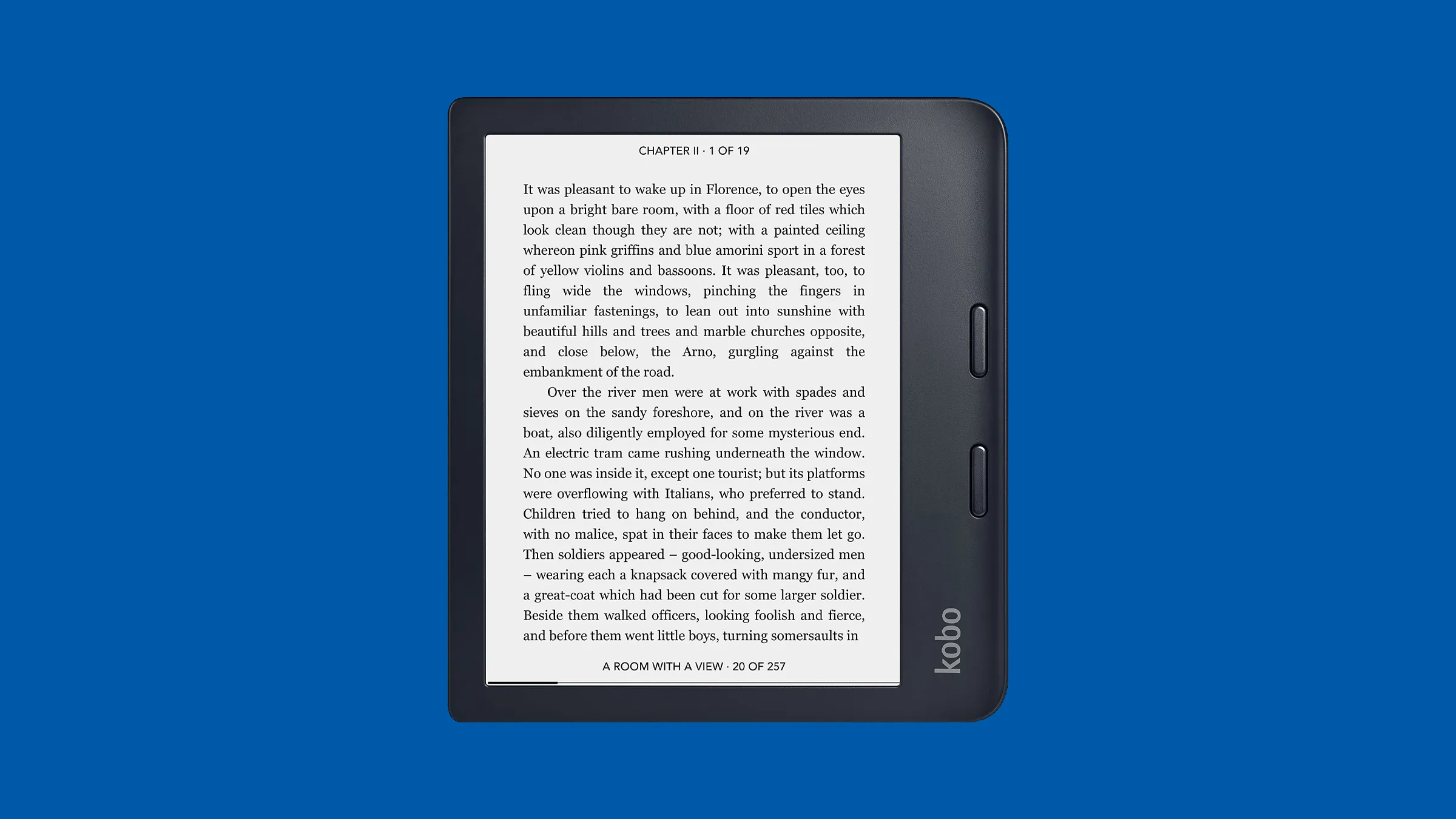Introduction
With the rise of technology, traditional books have taken a backseat as electronic readers, or e-readers, have gained popularity. E-readers offer convenience and portability, allowing book lovers to carry hundreds, or even thousands, of books in a single device. But have you ever wondered how many books an e-reader can actually hold?
In this article, we will delve into the storage capacity of different e-readers and discuss factors that can affect the number of books an e-reader can hold. We will also explore the file formats and sizes of ebooks, compare e-reader storage with cloud storage, and provide some tips and tricks to optimize e-reader storage. So, if you’re curious about maximizing your e-reading experience, read on!
Before we delve into specifics, it’s important to note that e-readers come in varied storage capacities. Some e-readers have internal storage while others offer expandable storage options through memory cards or cloud storage services. The storage capacity of an e-reader is a key factor in determining how many books it can hold.
Nowadays, most e-readers provide ample storage space, with entry-level models typically offering around 4GB to 8GB of internal storage. This can translate to storing thousands of ebooks, depending on the file sizes. High-end e-readers may have even larger storage capacities, ranging from 16GB to 32GB or more.
However, it’s important to consider that storage capacity is not the sole determining factor for the number of books an e-reader can hold. Other factors, such as the file format and size of ebooks, will also play a role in the overall capacity.
In the following sections, we will explore these factors in more detail and provide insights into how to optimize your e-reader’s storage to make the most out of it.
The Storage Capacity of Different Ereaders
When it comes to e-readers, the storage capacity can vary depending on the brand and model. Let’s take a look at some popular e-reader options and their storage capacities:
- Amazon Kindle: The Kindle lineup offers a range of e-readers, from the basic Kindle to the high-end Kindle Oasis. The base models typically come with 4GB or 8GB of storage, which can hold thousands of ebooks. The higher-end models, such as the Kindle Oasis, offer larger storage options, with 32GB available for avid readers.
- Kobo eReaders: Kobo eReaders, known for their versatility, offer various models with different storage capacities. The entry-level models usually come with 8GB of storage, while the premium devices can offer up to 32GB. Kobo also provides expandable storage options with a microSD card slot on select models.
- Barnes & Noble Nook: The Nook e-readers typically offer 8GB or 16GB of internal storage, providing ample space for your ebook collection. Additionally, Nook devices support memory expansion through microSD cards, allowing for even more storage capacity.
It’s essential to consider your reading habits and the size of your ebook library when choosing an e-reader with the appropriate storage capacity. If you have a vast collection of ebooks or prefer to have all your favorite titles at your fingertips, it may be wise to opt for an e-reader with larger storage options.
Remember, while e-readers offer impressive storage capacities, it’s important to leave some space for firmware updates and system files. Therefore, it’s recommended to reserve some storage to ensure smooth functionality and optimal performance of your e-reader.
In the next section, we will explore the various factors that can affect the number of books an e-reader can hold, allowing you to make the most of your device’s storage capacity.
Factors Affecting the Number of Books an Ereader Can Hold
While the storage capacity of an e-reader plays a significant role in determining how many books it can hold, there are several factors that can affect the overall number. Let’s explore these factors:
File Formats and Sizes: Ebooks are available in various file formats, such as EPUB, MOBI, PDF, and more. Different e-readers support different file formats, and the size of the ebook file can vary. For instance, EPUB files are generally smaller in size compared to PDF files. It’s important to consider the compatibility of ebook formats with your e-reader and choose the most space-efficient format to maximize storage capacity.
Graphical Content: Ebooks that contain images, graphics, or illustrations tend to have larger file sizes compared to text-only books. If you’re an avid reader of graphic novels or books with rich visual content, it’s worth keeping in mind that they can occupy more storage space on your e-reader.
Font Sizes and Formatting: E-readers allow readers to customize font sizes and formatting options according to their preference. However, increasing the font size or using specific formatting styles like bold or italics can slightly increase the file size of the ebook. If you prefer larger fonts or formatting styles that impact the file size, you may need to consider this when estimating the number of books your e-reader can hold.
Operating System and Software: The operating system and software running on your e-reader can also influence the storage capacity available for ebooks. Some e-readers may reserve a portion of the storage for system files, applications, or updates, which reduces the actual space available for storing ebooks. It’s essential to consider this when calculating the number of books you can store.
Audio and Enhanced Features: Certain e-readers offer additional features like audio playback or enhanced multimedia capabilities. Ebooks that include audio files or interactive elements tend to have larger file sizes, reducing the number of books that can be stored on the device. If you frequently use these extra features, you may need to account for the additional storage space they require.
By considering these factors, you can make more precise estimates of the number of books your e-reader can hold. In the next section, we’ll compare e-reader storage with cloud storage and explore how it can impact your ebook collection.
File Formats and Sizes of Ebooks
When it comes to ebooks, file formats and sizes can have a significant impact on the storage capacity of your e-reader. Let’s delve into the details:
EPUB: EPUB is a widely used file format that is compatible with most e-readers. EPUB files are typically smaller in size compared to other formats, making them a space-efficient choice. Additionally, EPUB files offer reflowable text, allowing readers to adjust the font size and layout according to their preference.
MOBI: MOBI is the file format primarily used by Amazon’s Kindle e-readers. MOBI files are similar to EPUB files in terms of reflowable text and adaptability, but they may have slightly larger file sizes. However, the discrepancy is usually negligible for typical novels or non-graphic-intensive books.
PDF: PDF (Portable Document Format) is a popular file format used for ebooks, especially for documents with complex formatting or graphics. PDF files tend to have larger file sizes compared to EPUB or MOBI due to their fixed layout and inclusion of high-quality images. If you’re fond of PDF ebooks, it’s important to be mindful of their file sizes and their impact on your e-reader’s storage capacity.
Compressed Formats: Some ebooks may be available in compressed formats like ZIP or RAR, mainly when they contain multiple components such as images or interactive elements. If you come across compressed ebook files, you’ll need to decompress them before loading them onto your e-reader, which may consume additional storage space until the extraction process is complete.
Enhanced Formats: In recent years, ebooks with enhanced features, such as audio or multimedia components, have gained popularity. These enhanced formats, such as ePub3 or iBooks, typically have larger file sizes due to the additional content they incorporate. If you enjoy interactive elements or audiobooks, be aware that these formats may reduce the number of ebooks your e-reader can store.
Ultimately, when choosing ebook formats, it’s crucial to strike a balance between file size and the features you desire. Consider the compatibility of formats with your e-reader, the availability of content in different formats, and the impact those file sizes may have on your device’s storage capacity.
In the next section, we’ll explore the concept of e-reader storage versus cloud storage and how it can influence your ebook collection.
Ereader Storage vs. Cloud Storage
When it comes to storing ebooks, e-readers provide internal storage space, but there is also the option of utilizing cloud storage services. Let’s explore the differences between e-reader storage and cloud storage:
Ereader Storage: E-readers typically come with internal storage space that allows you to store ebooks directly on the device. This storage capacity determines the number of books you can keep readily available for offline reading. Ereader storage provides the advantage of immediate access to your entire collection without the need for an internet connection. However, e-reader storage is limited and can fill up quickly, especially if you have a substantial ebook library.
Cloud Storage: Cloud storage allows you to store your ebooks in an online storage space, accessible through an internet connection. With cloud storage, you can store a vast number of ebooks without worrying about running out of physical storage on your e-reader. Services like Amazon Kindle Cloud, Google Play Books, and Dropbox offer cloud storage options for ebooks. This enables you to access your ebooks from multiple devices, as long as you have an internet connection. Cloud storage also provides the flexibility to add or remove ebooks without worrying about space limitations.
While cloud storage offers convenience and virtually limitless storage capacity, it’s important to note that a reliable internet connection is required to access your ebooks. Additionally, there may be some limitations to offline access, depending on the specific cloud storage service and the features of your e-reader.
Many e-readers also provide the option to synchronize your ebook library with cloud storage, allowing you to access your ebooks from both the e-reader and other compatible devices. This synchronization ensures that your reading progress, bookmarks, and annotations are consistent across devices.
Ultimately, the choice between e-reader storage and cloud storage depends on your reading habits, preferences, and the size of your ebook library. Some readers may prefer the convenience of cloud storage, while others may prioritize offline access and prefer to rely on the physical storage capacity of their e-reader.
Now that we’ve explored the difference between e-reader storage and cloud storage, let’s discover some helpful tips and tricks to optimize your e-reader storage in the next section.
Tips and Tricks to Optimize Ereader Storage
Maximizing the storage capacity of your e-reader is essential for maintaining a vast collection of ebooks. Here are some tips and tricks to help you optimize your e-reader storage:
- Delete Unwanted Ebooks: Regularly review your ebook library and delete ebooks that you no longer need or have already read. This frees up valuable storage space for new additions to your collection.
- Utilize Cloud Storage: Take advantage of cloud storage services to store your ebooks. Move less frequently accessed ebooks or those with larger file sizes to the cloud, making room for more frequently read titles on your e-reader.
- Compress Large Ebook Files: If you have ebooks with large file sizes, consider compressing them to reduce their footprint. You can use tools like Calibre to compress ebooks without compromising the reading experience.
- Optimize Ebook Formatting: Adjust the font size, margins, and line spacing to find the most comfortable settings that minimize the file size of each ebook. Experiment with different formatting options to strike a balance between readability and storage space.
- Organize with Collections: Organize your ebook library into collections or categories to easily locate specific titles. This organizational strategy not only helps with navigation but also allows you to better manage your storage by grouping related ebooks together.
- Remove Unused Annotations: Annotations like highlights and notes can take up additional storage space. Regularly review and delete any unused or outdated annotations to free up storage on your e-reader.
- Avoid Redundancy: Be mindful of duplicate copies of ebooks in your library. Remove any duplicate files to avoid wasting storage space on your e-reader.
- Consider Ebook Subscriptions: If you enjoy reading multiple books in a specific genre or by a particular author, consider subscribing to an ebook service that allows you to access a vast library without taking up physical storage space on your e-reader.
By implementing these tips, you can make the most of your e-reader’s storage capacity and ensure that you have a well-organized library of ebooks at your fingertips.
Now that you’re armed with these optimization strategies, you can enjoy expanding your ebook collection without worrying about storage limitations on your e-reader.
Conclusion
E-readers have revolutionized the way we read and carry books, allowing us to have a vast library at our fingertips. The storage capacity of e-readers plays a crucial role in determining how many books they can hold, but it’s not the only factor to consider. File formats, sizes, and the presence of graphical content or enhanced features can impact the number of books an e-reader can store.
Popular e-reader brands like Amazon Kindle, Kobo, and Barnes & Noble Nook offer a range of storage options to suit different needs. It’s important to choose an e-reader with an appropriate storage capacity based on your ebook collection size and reading preferences.
Additionally, understanding file formats and sizes can help you make smarter choices when it comes to optimizing your e-reader’s storage. Choosing space-efficient formats like EPUB and being mindful of graphical content can help you make the most of your storage space.
Cloud storage is also worth considering as it provides limitless storage capacity and the ability to access your ebooks across multiple devices. However, it’s crucial to have a reliable internet connection for seamless access to your cloud-stored ebooks.
To optimize your e-reader storage, you can delete unwanted ebooks, utilize cloud storage services, compress large files, optimize ebook formatting, organize your library, remove unused annotations, avoid redundancy, and consider ebook subscriptions.
By implementing these tips and tricks, you can maximize the storage capacity of your e-reader and enjoy a vast collection of ebooks without worrying about running out of space.
Whether you’re a casual reader or a book enthusiast, understanding and optimizing e-reader storage will enhance your reading experience and provide you with a portable library for all occasions.
So, go ahead, choose your e-reader wisely, organize your ebooks efficiently, and embark on countless literary adventures with your personal digital library!

























